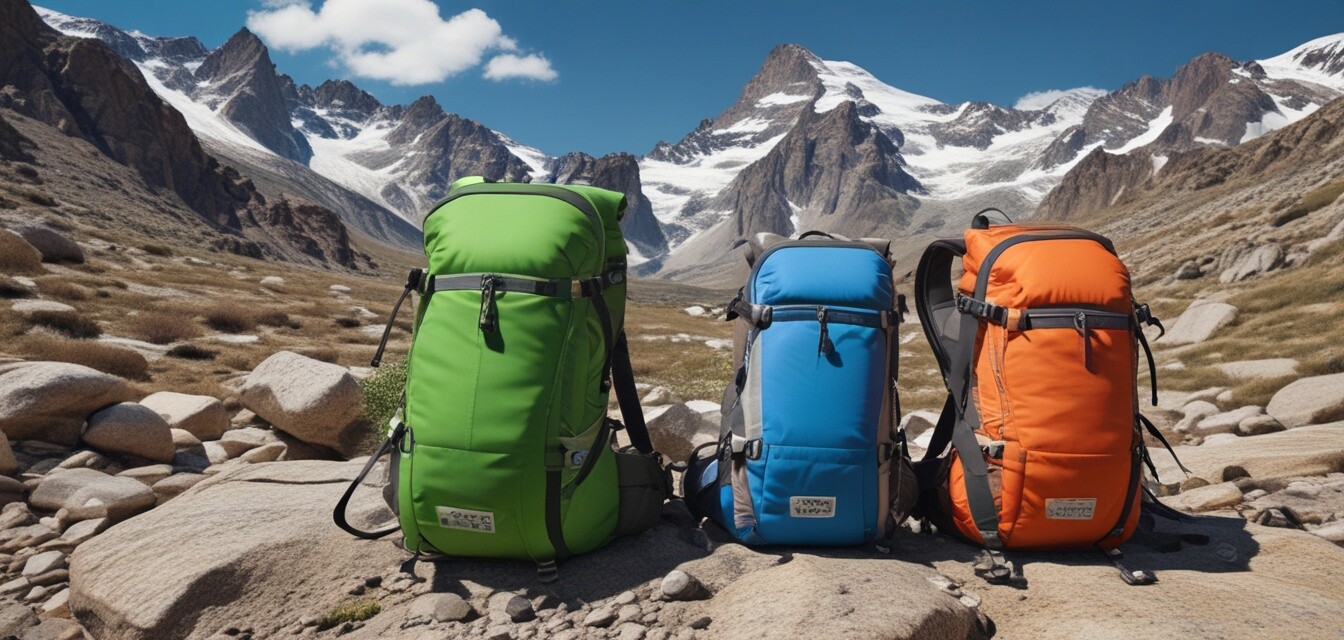
The growing popularity of hydration packs
Key takeaways
- Hydration packs are becoming essential for outdoor activities.
- They provide hands-free hydration on the go.
- Various designs cater to different needs and preferences.
- Brands like Dakine are leading the market with innovative features.
- Understanding trends in hydration packs can enhance your outdoor experiences.
In recent years, hydration packs have surged in popularity among outdoor enthusiasts and casual hikers alike. These handy packs offer a practical solution for staying hydrated while on the move, proving essential for those long trails or ski slopes. As brands innovate their designs, hydration packs are not just functional but also stylish.
What is a hydration pack?
A hydration pack is a specially designed backpack equipped with a water reservoir, commonly referred to as a bladder. It includes a hose that allows drinkers to sip water without stopping and can be a great alternative to traditional water bottles. This convenience can make a significant difference during strenuous activities.
Why are hydration packs gaining popularity?
Several factors contribute to the rising popularity of hydration packs:
- Hands-free hydration: The integration of a hose allows hikers and bikers to drink water easily without stopping.
- Lightweight design: Many hydration packs are designed to be lightweight, making them comfortable to wear for extended periods.
- Compact and versatile: Hydration packs can be used for various activities, from hiking to biking or even skiing, adapting to different environments.
- Increased awareness about hydration: As people become more health-conscious, staying hydrated has become a priority while engaging in outdoor activities.
Innovative features of modern hydration packs
Hydration packs have evolved significantly, with brands like Dakine leading the charge by incorporating innovative features to meet the needs of today’s adventurers. Some noteworthy features include:
| Feature | Description |
|---|---|
| Insulated hoses | Prevent water from getting too warm in hot weather. |
| Easy-to-clean bladders | Designed to be simple to clean, preventing mold and bacteria buildup. |
| Adjustable straps | Enable a customized fit for different body shapes and sizes. |
| Pockets for essentials | Provide storage for small items like snacks, keys, or phones. |
| Reflective elements | Enhance visibility during low-light conditions, ensuring safety. |
Different types of hydration packs
Hydration packs come in various styles, each designed for specific activities. Understanding the different types can better assist in choosing the right one for your needs:
- Day hiking packs: Typically larger, these packs can hold extra gear while providing hydration.
- Biking hydration packs: Smaller and more aerodynamic for efficient use during rides.
- Running packs: Designed for minimal weight, providing just enough room for hydration and essentials.
- Ski and snowboarding packs: Often designed with added insulation and compartments for gear.
Impact of brands on the hydration pack market
Brand identity plays an integral role in the hydration pack market. Companies like Dakine are pushing the envelope, continuously innovating their designs and functionality. Their products not only meet the technical requirements of outdoor activities but also appeal visually to users, blending performance with style.
Recent trends in hydration packs
Recent trends have showcased a shift in consumer preferences towards functionality and sustainability. Here are some notable trends:
- Eco-friendly materials: Brands are increasingly focusing on sustainably sourced materials.
- Smart technology: Integration of hydration tracking devices for monitored water intake.
- Fashion-forward designs: As hydration packs become a lifestyle accessory, trendy patterns and colors are becoming popular.
- Versatile usage: The lines between hiking, biking, and casual use are blurring, prompting brands to create multi-functional packs.
How to choose the right hydration pack
With so many options available, selecting the right hydration pack can be daunting. Here are some tips to guide you:
Beginners section
- Size matters: Choose a pack size based on the length of your trips and how much gear you’ll need to carry.
- Test the fit: A good fit prevents chafing and discomfort on the trail.
- Check the bladder capacity: Choose a bladder size that suits your hydration needs; common sizes range from 1.5L to 3L.
- Material and durability: Look for high-quality materials that handle rough outdoor conditions.
The future of hydration packs
As outdoor activities continue to grow in popularity, the future for hydration packs looks bright. Brands will likely focus on further innovations, enhancing comfort, sustainability, and technology integration. Keeping up with the latest trends will empower outdoor enthusiasts to make informed decisions.
Conclusion
Hydration packs have established themselves as essential gear for outdoor enthusiasts. As they become more popular, it's crucial to understand their features, benefits, and the trends that define them. With cutting-edge designs and a variety of applications, hydration packs are sure to remain an integral part of the hiking and outdoor recreation community.
Pros
- Convenient hands-free hydration.
- Lightweight and easy to carry.
- Offers various features tailored to activities.
Cons
- Can be expensive compared to regular backpacks.
- Requires maintenance to prevent mold and odors.